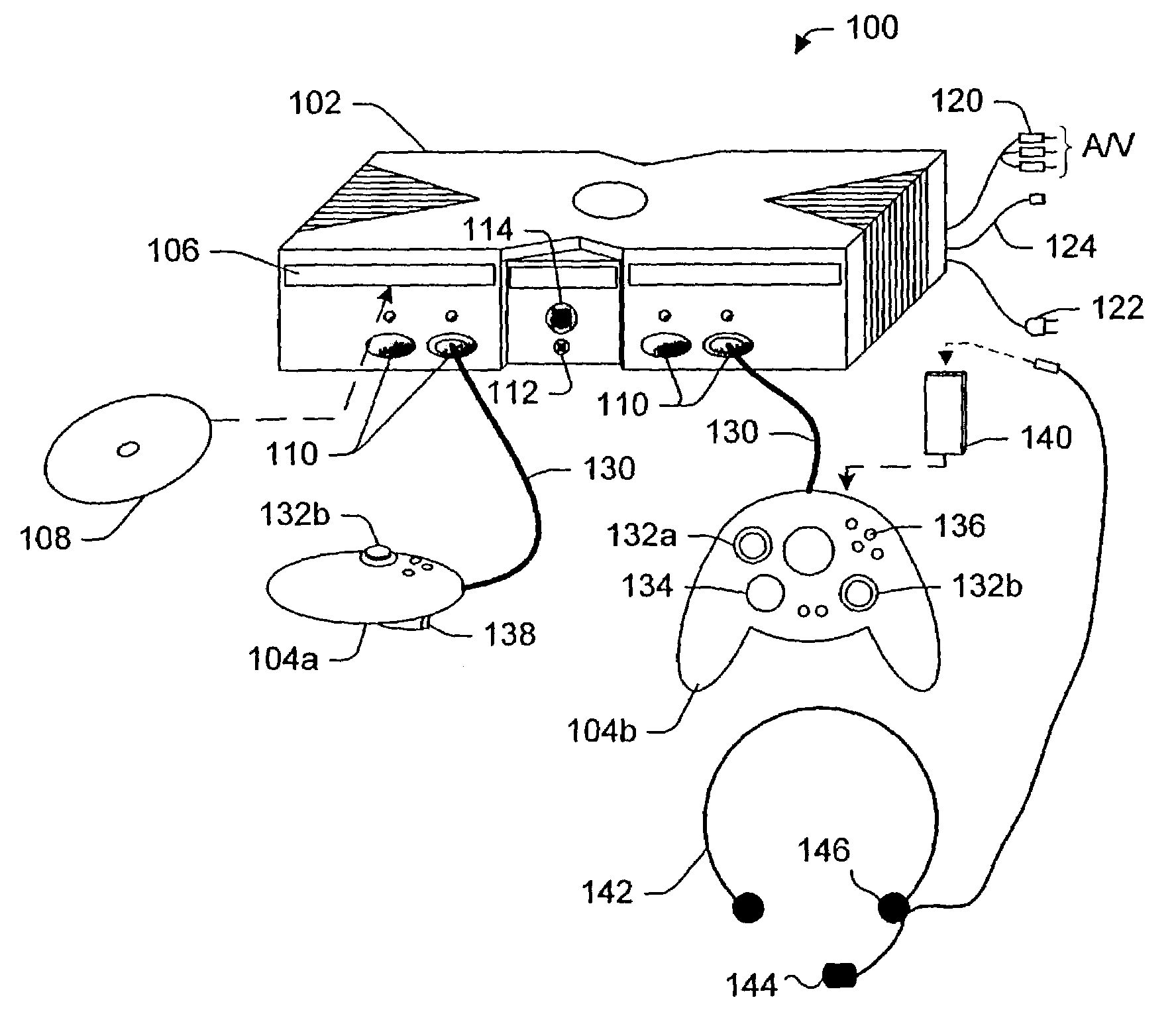Use of multiple player real-time voice communications on a gaming device
a gaming device and real-time voice technology, applied in the field of communication between players of electronic games, can solve the problems of generating a substantial network data overhead, unable to communicate with players at different sites, and unable to play games over the intern
- Summary
- Abstract
- Description
- Claims
- Application Information
AI Technical Summary
Benefits of technology
Problems solved by technology
Method used
Image
Examples
Embodiment Construction
Exemplary Gaming System for Practicing the Present Invention
[0040]As shown in FIG. 1, an exemplary electronic gaming system 100 includes a game console 102 and support for up to four user input devices, such as controllers 104a and 104b. Game console 102 is equipped with an internal hard disk drive (not shown in this Figure) and a portable media drive 106 that supports various forms of portable optical storage media, as represented by an optical storage disc 108. Examples of suitable portable storage media include DVD discs and compact disk-read only memory (CD-ROM) discs. In this gaming system, game programs are preferably distributed for use with the game console on DVD discs, but it is also contemplated that other storage media might instead be used, or that games and other programs can be downloaded over the Internet or other network.
[0041]On a front face of game console 102 are four connectors 110 that are provided for electrically connecting to the controllers. It is contempla...
PUM
 Login to View More
Login to View More Abstract
Description
Claims
Application Information
 Login to View More
Login to View More - R&D
- Intellectual Property
- Life Sciences
- Materials
- Tech Scout
- Unparalleled Data Quality
- Higher Quality Content
- 60% Fewer Hallucinations
Browse by: Latest US Patents, China's latest patents, Technical Efficacy Thesaurus, Application Domain, Technology Topic, Popular Technical Reports.
© 2025 PatSnap. All rights reserved.Legal|Privacy policy|Modern Slavery Act Transparency Statement|Sitemap|About US| Contact US: help@patsnap.com



